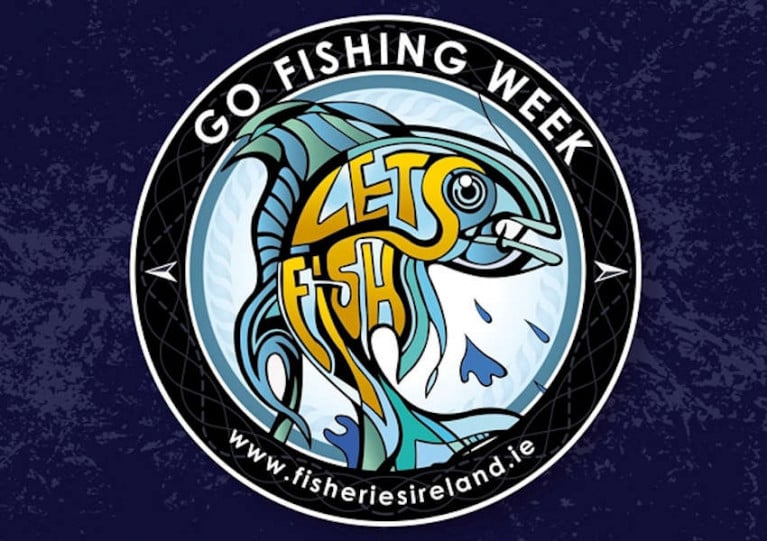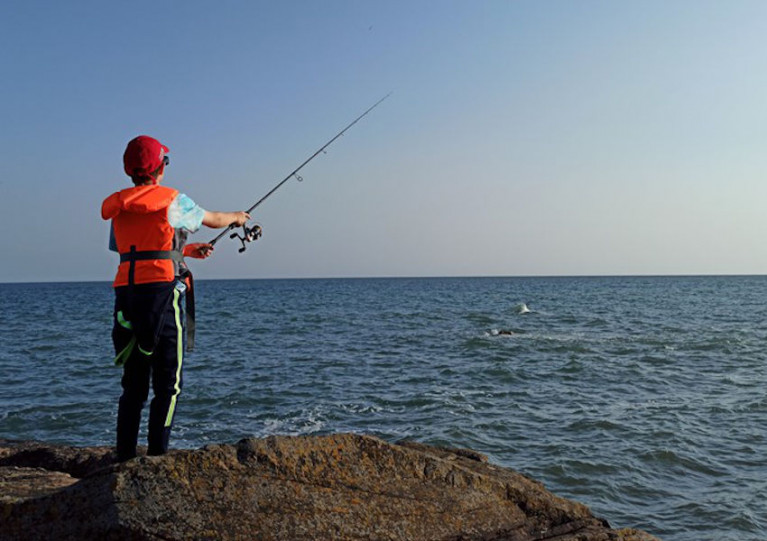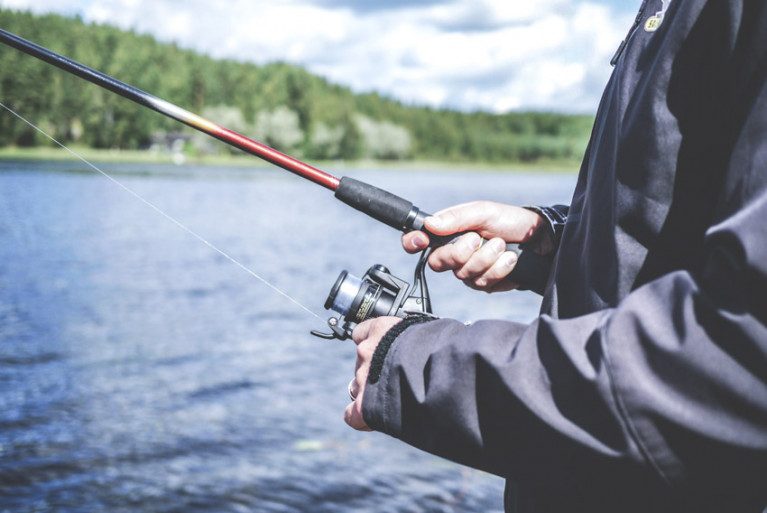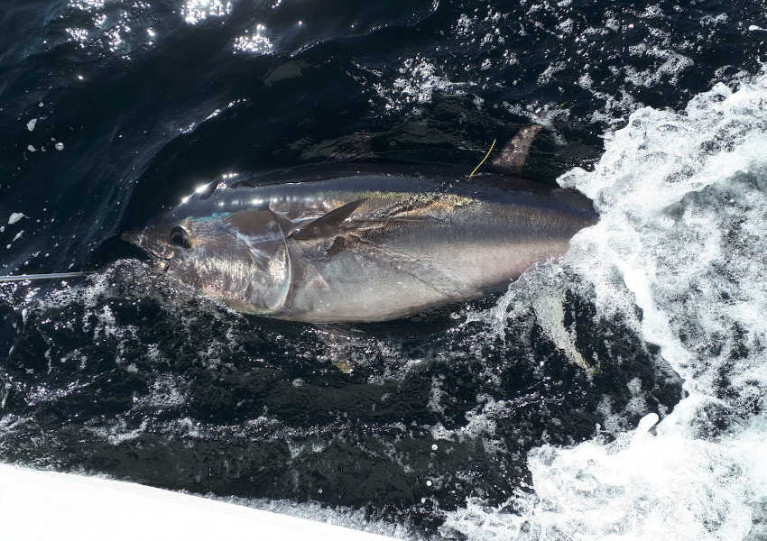Displaying items by tag: Inland Fisheries Ireland
A Cork man has been jailed for four months on three charges including assault on a fisheries officer.
Jason Callaghan, with an address on Lower Barrack Street, was convicted by Judge Brian O’Shea at a special sitting of Midleton District Court on Tuesday 27 April.
The court was told how officers from Inland Fisheries Ireland (IFI) had observed Callaghan illegally fishing with two other men in the Owenacurra River at the Cork Road Bridge in Midleton on the afternoon of Sunday 21 July 2019.
At the time, the river was closed to angling for the protection and conservation of salmon and sea trout stocks.
The court heard Callaghan fled the scene when approached by fisheries officers. He was then pursued from the river to the town centre where he assaulted a fisheries officer with the metal end of a fishing rod, injuring the officer and causing him to fall to the ground.
The assault was witnessed by a plain-clothes garda attending the incident. The garda also gave evidence during the hearing which lasted for several hours.
Judge O’Shea fined Callaghan €500, handing him an additional two-month custodial sentence for use of a strokehaul. Callaghan was further convicted of impeding an authorised officer and was given a four-month custodial sentence for assaulting an authorised officer, to run concurrent with the two-month sentence.
Callaghan, who had previous fisheries convictions, fully contested the charges and gave evidence to the court.
Kieran Ryan of Bishopstown and Calvin Morrissey of Carrignavar, who had been illegally fishing with Callaghan, were also convicted. Ryan received a two-month custodial sentence for use of a strokehaul and one month for impeding an authorised officer. Morrissey was convicted of use of a strokehaul and impeding an authorised officer and fined €500 on both counts.
All the charges were brought under the Fisheries (Consolidation) Act 1959.
Judge O’Shea rejected submissions from legal representatives for the three accused and stated that Callaghan had told lies in the witness box which he “expressly rejected”. He noted that there was “no hint of an apology and no remorse shown” by Callaghan or his co-defendants.
Sean Long, director of the South Western River Basin District, said: “The safety of our fisheries officers is of utmost importance to IFI. This was a reckless assault on an officer in broad daylight on a busy street which could have had significant consequences for a man simply trying to carry out his job.
“Thankfully, our staff member was back at work after a couple of days and able to continue protecting our fisheries resource.
“I hope these custodial sentences will give would-be offenders pause for thought. An assault on a fisheries officer is a severe matter and we will continue to prosecute offenders without exception.”
Inland Fisheries Ireland (IFI) is to lead on the Annacotty weir fish passage improvement project, Environment Minister Eamon Ryan has announced.
Annacotty Weir on the lower Mulkear River outside Limerick has been identified as a significant barrier to the free movement of several fish species including wild Atlantic salmon; sea, river and brook lamprey; wild brown trout; and eels.
The majority of the main river and its smaller tributaries in the catchment are designated as a Special Area of Conservation (SAC) under the EU Habitats Directive.
Minister Ryan, who has responsibility for inland fisheries, said: “Free passage of fish is key to the sustainability of our precious fish stocks and the protection of biodiversity along our rivers.
“This project will help protect the Mulkear as one of our most valuable river habitats. I am delighted that Inland Fisheries Ireland will lead this project, and that their in-house expertise on fish passage mitigation will ensure it is delivered to the highest standard.”
IFI says it will progress these works as a pilot project in collaboration with various State agencies and key stakeholders “through the multiple phases involved in improvement of fish passage at the weir”.
This pilot includes the design and implementation of a national barriers restoration programme currently being progressed by the Department of Housing, Local Government and Heritage and which is expected to be announced in the draft River Basin Management Plan to be published shortly.
It will also be an opportunity “to test a collaborative and ecology-focused design approach towards informing similar future mitigation projects” as well as evaluate “enhanced community engagement opportunities that go beyond the standard consultation practices involved in the planning process”.
IFI chief executive Francis O’Donnell added: “Ensuring the free passage of fish is a main priority for our agency as we conserve and protect our inland fisheries resource.”
A Clonmel man has been convicted on five charges including assaulting fisheries officers stemming from a poaching incident at Inniscarra Dam in May last year.
Officers of Inland Fisheries Ireland (IFI) had observed Craig Brew fishing in a prohibited area known as the ‘Flush’ at the face of the ESB dam on 23 May 2020.
Evidence was heard that Brew — who had travelled from Tipperary to Cork during the COVID-19 lockdown — had refused to cooperate and violently threatened and resisted the fisheries officers before gardaí arrived to assist.
Brew was convicted by Judge Marian O’Leary at Cork District Court on Wednesday 21 April and fined €500 for illegal entry upon the private fishery, €400 for obstructing the fisheries officers, €500 for assault and €300 for not having a Salmon Rod Ordinary Licence.
Judge O’Leary also fined the defendant €300 for using a vehicle to aid the commission of an offence and considered an ancillary disqualification for the use of the vehicle. Costs of €400 were awarded to IFI and an order for forfeiture of the fishing rods used was granted.
Sean Long, director of the South Western River Basin District, said: “The welfare of our Fisheries Officers is of foremost importance to IFI and that they can carry out their necessary work while ensuring their own personal safety. We are concerned at the level of threatening and aggressive behaviour towards fisheries officers in the area and on social media.
“While we are satisfied with the convictions in this case, an assault on a fisheries officer is a severe matter and offenders will be prosecuted without exception. I urge anglers and members of the public to report illegal fishing through IFI’s confidential hotline on 1890 34 74 24 or 1890 FISH 24.”
Despite the COVID-19 pandemic, anglers fishing in Irish waters in 2020 caught hundreds of large fish — according to the latest Irish Specimen Fish Committee (ISFC) report.
One new record was set — for a 12.02kg smooth-hound hooked off Wicklow in July last year by Dublin angler John Hughes — and over 300 exceptionally large fish of different species were caught by anglers from venues throughout Ireland.
The main species were sharks like smooth-hound and spurdog while in freshwater, pike and brown trout dominated. All fish were caught, weighed, measured and released.
 Amy O’Brien with dad Sidney, winner of the Dr AEJ Went Award for Young Specimen Angler of the Year with her 1.02kg golden grey mullet
Amy O’Brien with dad Sidney, winner of the Dr AEJ Went Award for Young Specimen Angler of the Year with her 1.02kg golden grey mullet
Details of all these fish and current Irish record fish are in the Irish Specimen Fish Committee Report 2020, which has just been released and is available to download HERE. Hard copies will be available in mid-May.
The ISFC, which is supported by Inland Fisheries Ireland, is an independent all-Ireland voluntary body which verifies and records the capture of large fish caught on rod by anglers in freshwater and marine waters.
Winners Announced In ‘Go Fishing Week’ Video Competition
The winners and runners-up have been announced in a national video competition for Go Fishing Week 2021, which is taking place this week.
Entries were received across Ireland under the title ‘Why I love to fish’, and one overall winner and five-runners up were selected.
The overall winner is Michael Galvin and his son Cathal from Longford, who received €100 worth of angling tackle. Runner-up prizes, which include buoyancy aids, are awarded to Angela Byrne; Anthony Murnane; Christopher Eleker; Maud Finn and her twin boys; and Michael Heron.
Suzanne Campion of Inland Fisheries Ireland said: “We would like to congratulate all of the participants in the competition and in particular our overall winner and five runners-up.
"The videos embodied nature, a sense of wellbeing and enjoyment and displayed diverse footage of the anglers favourite fishing locations around Ireland.”
Go Fishing Week continues until next Monday 3 May and entries are still open in another competition, this time sharing a photo of a favourite fishing spot, as previously reported on Afloat.ie.
All salmon and sea trout anglers who have not returned last season’s angling logbook and unused gill tags are being urged to do so immediately.
Inland Fisheries Ireland (IFI) says the logbooks and unused tags are necessary to provide vital data for managing Ireland’s wild Atlantic salmon and sea trout stocks into the future.
In accordance with the Wild Salmon and Sea Trout Tagging Scheme, an angler must attach a valid gill tag to a salmon (any size) or sea trout (over 40cm) immediately on landing, followed by an entry to their logbook of their catch and gill-tag used.
If the fish is to be released, anglers must also make a catch record in their logbook.
Anglers are required by law to return their completed logbook (setting out their fishing and catch record) and all unused tags to the issuing office with seven days of licence expiry and no later than 19 October annually.
Suzanne Campion, head of business development at IFI, says: “Salmon stocks are at a critical point and their survival is dependent on efforts made to manage and conserve this precious species.
“IFI is appealing to those anglers that have yet to return their logbooks to do so now. Anglers’ logbooks are a key part of the management process and we need your logbook information to inform the protection and conservation of this resource for future generations of anglers and salmon.”
Returns can be done via the prepaid postage return envelope which was supplied with the 2020 angling licence. In the absence of this, anglers can return their completed logbook and unused tags to the IFI office addressed on their licence/logbook.
Alternatively, scanned logbooks and licences may be emailed to [email protected] — anglers who choose this option are reminded that both sides and any continuation pages should be included in the scan to ensure the licence names and number can be linked to the correct logbook.
Inland Fisheries Ireland (IFI) has announced the line-up of virtual events for Go Fishing Week 2021, its national celebration of fishing and angling.
Sustainability, protecting habitats and wellbeing benefits are the big themes over a week of free events that begins this Sunday 25 April with the first of the special ‘Lunch and Learn’ webinar series.
Among those giving talks during the week is Evelyn Cusack, head of forecasting at Met Éireann, who will discuss how the weather on our inland lakes is forecast and the importance of knowing the weather for angling safety.
To view the full list of webinars and how to sign up, see the IFI website HERE.
There will also be a range of podcasts including one on the wildlife of the Garavogue River, a series of how-to videos, blogs, competitions and lots more on IFI’s social media channels on Facebook and Twitter. Followers are encouraged to use the hashtag #GoFishingWeek2021 when sharing the week’s events.
Meanwhile, IFI is asking people to submit a view of their favourite fishing spot in a photo competition to mark the occasion.
‘My Favourite Fishing Place’ is a chance to share a place where you love to fish and some of the fishing adventures you have gone on.
Entries are welcome from individuals or groups, fishing clubs, youth clubs, centres and projects until 5pm on Tuesday 4 May. The overall winner will receive fishing tackle to the value of €100 and there will also be prizes for runners-up and special categories. For more details see the IFI website HERE.
To learn more about what’s happening during the week and how you can get involved, visit the Go Fishing Week online hub HERE.
Sea Angling Survey to Document Changes in Catch Over the Years
A new online survey aims to collect changes in sea anglers’ catches in Ireland’s coastal waters over time.
Inland Fisheries Ireland (IFI) says anglers participating in the survey will contribute towards understanding changes in angling species here.
Ireland’s sea angling resource ranges from tope in the Irish Sea to bass on the surf beaches of the Dingle Peninsula.
These fisheries attract many local anglers along with visitors from around the world. The new survey aims to track and inform possible long-term changes in the coastal fish populations targeted by anglers.
Dr William Roche, senior research officer at IFI, said: “We are looking for sea anglers of all ages and experience to take part in our new survey programme to help us to understand possible trends and changes in catch over the years.
“We know that anglers have expert localised knowledge from spending time outside observing nature and the fish they catch.
“Over a sea-angling career, this experience becomes a unique insight into the state of coastal fisheries and we want to reach out to those who have localised knowledge and care about the future of our fisheries resource to help us to understand how it has changed.”
IFI says the success of the study “relies on the knowledge, experience and observations of citizen scientist anglers. The survey has been carefully formulated to capture this knowledge and allow it to be expressed as indicators of the current state of our important fish populations.”
Each unique respondent will also be entered into a prize draw to win a voucher of up to €200 for their local angling tackle shop.
New Responsible Outdoor Recreation Guide for Angling Launched
Inland Fisheries Ireland (IFI) has teamed up with Leave No Trace Ireland to launch an outdoor recreational guide for angling based on the 7 Principles of Leave No Trace.
As custodians of our natural fisheries resource, anglers can refer to this short guide on how they can minimise the impact their fishing trip can have on the environment.
The guide is also a useful checklist for anyone enjoying the outdoors with the 7 Principles being key reminders of how to reduce the effects we have on the natural world. They are:
- Plan Ahead and Prepare
- Be Considerate of Others
- Respect Farm Animals and Wildlife
- Travel and Camp on Durable Ground
- Leave What You Find
- Dispose of Waste Properly
- Minimise the Effects of Fire
Suzanne Campion at IFI said: “320,000 Irish people enjoy fishing in Ireland and this guide will help them with their role in protecting the environment.
“Anglers are important stewards over the waters they fish. The guide we have prepared with Leave No Trace Ireland outlines what to consider before going on an angling trip.
“The angling community have a role in protecting the environment they fish in and to help nurture it for future generations to enjoy our fisheries resource.”
Maura Kiely, CEO of Leave No Trace Ireland, said she is delighted at the partnership for this new guide and added: “We have tailored the 7 Principles of Leave No Trace to work as a checklist for anglers when they are embarking on a fishing trip.
“Anglers are caretakers over the environment they fish in and they understand the need for healthy aquatic systems for fish populations to thrive. The guide will help anglers to make decisions that will minimise any impacts on nature when fishing.’
The guide is available on the IFI website HERE.
Bluefin Tuna Data Collection Fishery Programme Returns for 2021
Building on the success of pilot programmes in 2019 and 2020, the Tuna CHART (CatcH And Release Tagging) fishery to collect scientific data on bluefin tuna will return in 2021, subject to COVID-19 restrictions.
Tuna CHART is a collaborative scientific programme between Inland Fisheries Ireland and the Marine Institute in partnership with the Sea Fisheries Protection Authority, the Department of Agriculture, Food and the Marine (DAFM) and the Department of Environment, Climate and Communications (DECC).
In 2020, the Tuna CHART programme authorised 22 charter skippers to operate a scientific fishery — in which anglers participated fully — to catch, tag and release bluefin tuna. These professional skippers were trained to tag, measure and record bluefin data.
Despite the limitations of the pandemic, 685 bluefin tuna were caught, tagged and released around the Irish coast — a 230% increase in bluefin tagged on the previous year.
 File image of bluefin tuna in Donegal Bay Photo: David Morrissey
File image of bluefin tuna in Donegal Bay Photo: David Morrissey
The most productive sites were the North-West and the South coast, mainly the waters of the Cork coastline. As many as 11 bluefin were tagged on one angling trip, a new Irish record. The largest tuna tagged was 275cm, weighing an estimated 822lbs.
All tuna were carefully handled subject to strict guidelines set by the Tuna CHART programme and all were released alive. Data from the tagging programme has been collated by the partnership for reporting to the International Commission for the Conservation of Atlantic Tuna (ICCAT).
This year a maximum of 25 authorisations may be granted to qualifying vessels and skippers around the Irish coast for fishing between 1 July and 12 November. Applications are now open and will be accepted until 1pm on Friday 9 April.
Depending on the successful operation and review of this year’s fishery, it is intended that a scientific catch-and-release fishery may also operate in 2022.
The partnership says a core aspect of the Tuna CHART programme is the welfare and successful release of the bluefin tuna. Authorised skippers will be required to have high specification rods, reels and line in advance of the open season in order to ensure that the fish is brought alongside the vessel to be measured and tagged in the water in a timely manner.
Data collection for scientific assessment is the primary purpose of the fishery and will continue to be a key requirement for skipper participation in this scientific catch-and-release fishery, the partnership adds.
Skippers will be required to collect data on every bluefin trip undertaken and each bluefin tuna they catch, tag and release, and their angling and data recording expertise is an important part of the overall survey programme.
Anglers will have an opportunity to participate in this fishery and contribute to this important scientific study by chartering and fishing from authorised vessels only. Unauthorised vessels are not permitted to target or catch bluefin tuna, and any unauthorised person found to be targeting bluefin tuna will be prosecuted. Applications for authorisations are open to charter skippers only.


























